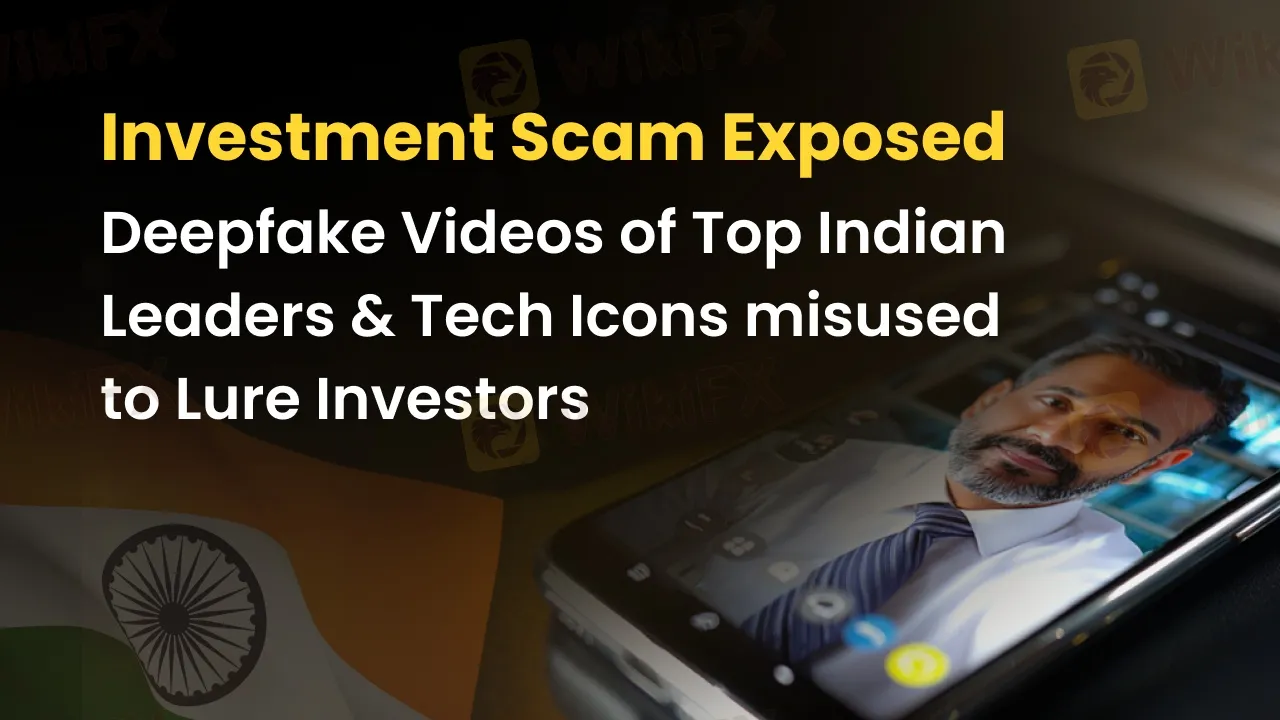简体中文
繁體中文
English
Pусский
日本語
ภาษาไทย
Tiếng Việt
Bahasa Indonesia
Español
हिन्दी
Filippiiniläinen
Français
Deutsch
Português
Türkçe
한국어
العربية
Investment Scam Exposed: Deepfake Videos of Top Indian Leaders & Tech Icons misused to Lure Investor
Abstract:A fraudulent investment scheme, falsely presented as a government-backed program, has been exposed. The scam encouraged people to deposit ₹21,000 with the deceptive promise of earning ₹1 million every month. Branded as "Google Invest," the operation used deepfake videos showing Google CEO Sundar Pichai seemingly promoting the initiative as a legitimate government effort.

A fraudulent investment scheme, falsely presented as a government-backed program, has been exposed. The scam encouraged people to deposit ₹21,000 with the deceptive promise of earning ₹1 million every month. Branded as “Google Invest,” the operation used deepfake videos showing Google CEO Sundar Pichai seemingly promoting the initiative as a legitimate government effort.
Scammers also copied the layout and typography of The Times of India to gain people‘s trust. They didn’t stop there—they also created a fake article featuring an image of PM Modi, falsely presenting it as official government approval of the investment scheme. Embedded links within the article mislead victims into visiting fraudulent platforms such as Go Invest.
In an effort to legitimize the scam, fraudsters created a deepfake video of Nirmala Sitharaman, falsely showing her supporting a non-existent investment platform called InvestGPT. Another fake website, Cryptify, used a similar scam. This time, scammers copied the look of The Times of India website and falsely claimed that Finance Minister Nirmala Sitharaman, Infosys founder Narayana Murthy, and his wife Sudha Murty had launched a government-backed platform. The scam promised daily payments of ₹1.9 lakh and falsely claimed ties with SBI, Microsoft, and IBM.
In April, the State Bank of India (SBI) released a public warning, stating that deepfake videos were spreading false claims about the bank, the Government of India, and global companies launching an AI-based investment platform offering highly unrealistic returns. SBI stated, “We clarify that SBI does not endorse any such schemes that promise unrealistic or unusually high returns.”
The bank advised customers to rely on official channels for information to protect themselves from fraud. It also cautioned against clicking suspicious links or sharing sensitive personal or financial details in response to deepfake videos.
Conclusion
Do not trust “too-good-to-be-true” schemes—they are nothing more than bait to make you a victim and swindle your money.
The first step to avoiding such scams is to simply ignore them. Second, do not click on any suspicious links. Third, always visit the official websites or verified accounts of the companies and individuals being used to promote these services. Be vigilant. Your safety is in your hands.
Disclaimer:
The views in this article only represent the author's personal views, and do not constitute investment advice on this platform. This platform does not guarantee the accuracy, completeness and timeliness of the information in the article, and will not be liable for any loss caused by the use of or reliance on the information in the article.
WikiFX Broker
Latest News
What Is Indices in Forex? A Beginner’s Guide to Trading Forex Indices
FBI Issues Urgent Warning on Crypto Recovery Scams
Robinhood Moves Toward MENA Expansion with Dubai DFSA License Application
How to Use Retracement in Trading
CySEC warns the public against 17 investment websites
European leaders to join Zelensky at White House meeting with Trump
Germany's Industrial Core Is Collapsing Under The US Trade Deal And The Green Agenda
Understanding Forex Spread Cost and How to Minimize It
Juno Markets: A Closer Look at Its Licenses
Complaints Against Weltrade | Traders Can’t Get Their Money Back
Currency Calculator


